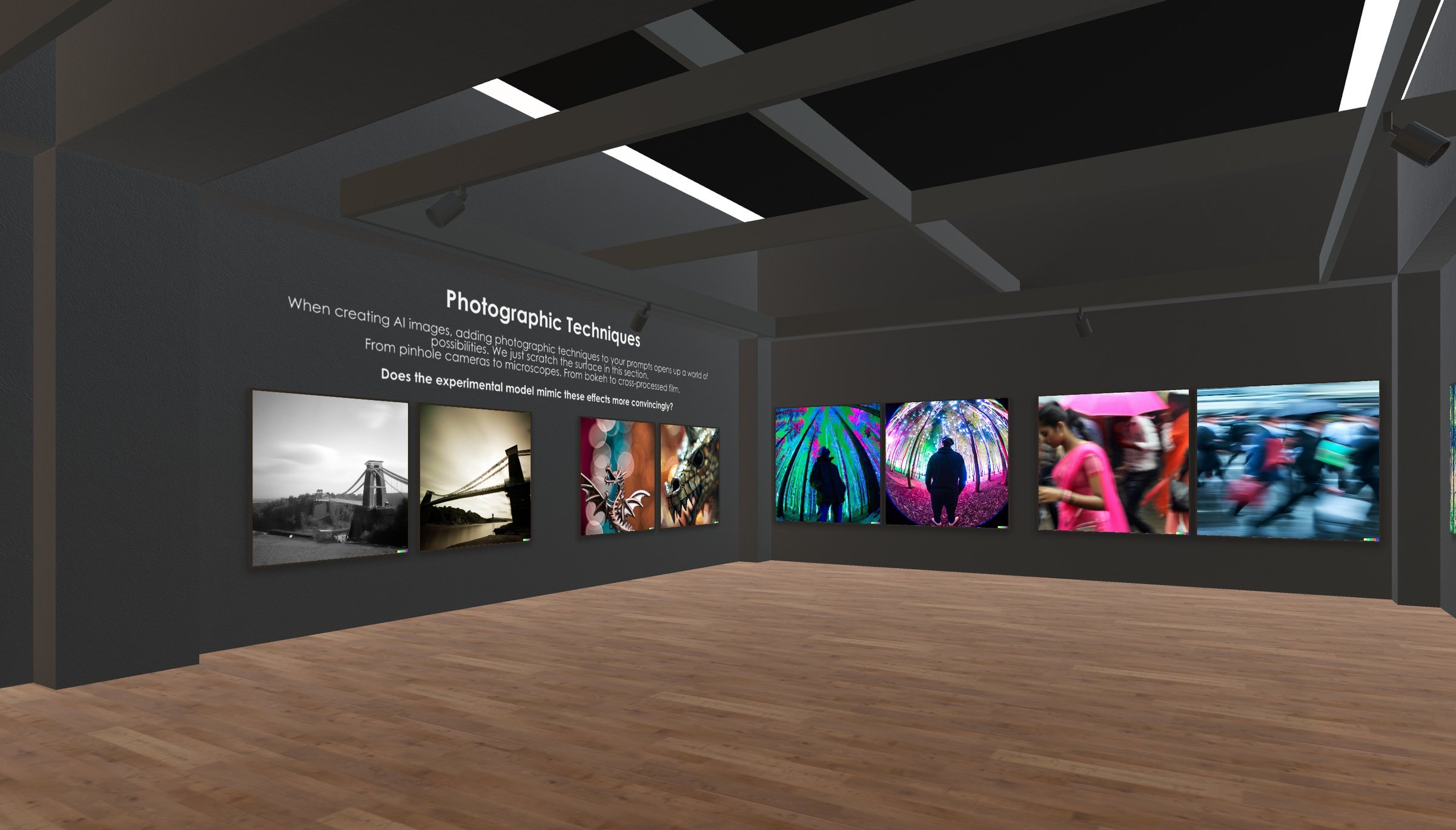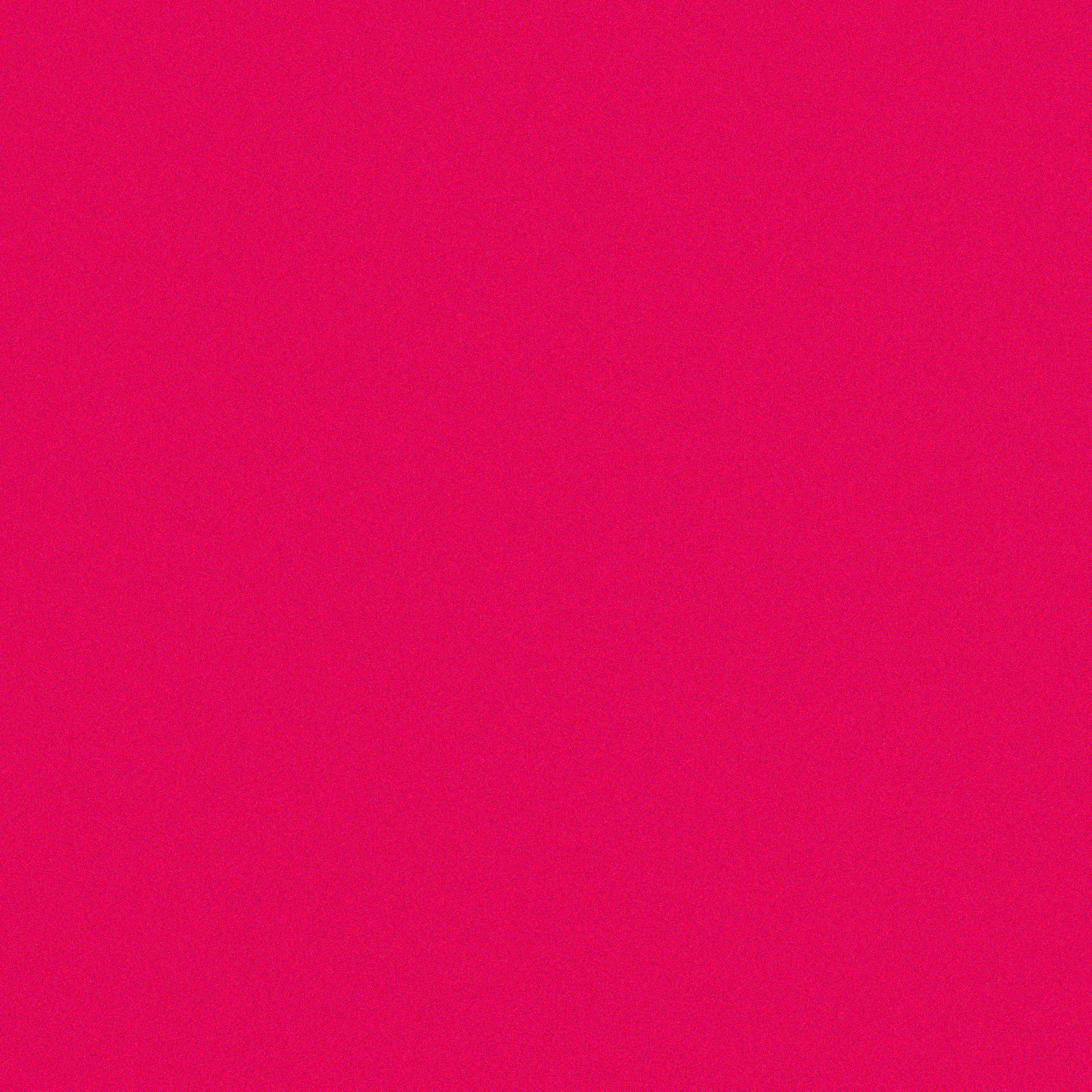

Photographic Techniques
When creating AI images, adding photographic techniques to your prompts opens up a world of possibilities. We only scratch the surface in this section.
From pinhole cameras to microscopes. From bokeh to cross-processing
Does the experimental model mimic these effects more convincingly?
Clifton Suspension Bridge - The Clifton Suspension Bridge is synonymous with Bristol. Here we wanted to depict the famous Bristol landmark being built, a process that lasted 33 years. We also wanted to capture this using a pinhole camera (camera obscura) as there was one installed in the Clifton Observatory just three years before work on the bridge started. The camera obscura, which is still functional to this day, was used by artists to draw the gorge across which the bridge now spans. The model has somewhat effectively capture the building process but one might argue that the image is too high resolution to be convincingly made by a pinhole camera. Prompt: a pinhole photograph of Clifton Suspension Bridge being built Model: DALL-E v2.0 (2022)
Clifton Suspension Bridge - The term 'camera obscura' was coined by German Astronomer Johannes Kepler in 1604. They offer a fascinating exploration into the principles of light and optics. The device operates by allowing a small amount of light to enter through a tiny hole, often called an aperture. This light then projects an inverted image of the scene outside onto a wall or screen inside the box-like structure. Artists throughout history have utilised this technique to accurately depict three-dimensional objects onto a two-dimensional surface, enabling them to capture detailed and proportionally accurate images. The use of camera obscura not only illuminates core principles of light but also serves as an important tool in the history of art and visual representation. Prompt: a pinhole photograph of Clifton Suspension Bridge being built Model: DALL-E v2.Exp (2023)
Bokeh - Bokeh, pronounced 'boh-kay,' is a photographic effect characterised by a sharp foreground set against a softly blurred background. The aesthetic, seen here, arises when there are light sources in the background, manifesting as circles or 'bubbles' of light. This effect is typically achieved by manipulating the depth of field—a concept referring to the range of distance within which objects appear acceptably sharp in an image. A shallow depth of field is employed, whereby only objects at a specific distance from the lens fall into sharp focus. A larger aperture—indicated by a smaller f-number—can intensify this effect. As evidenced in the presented image, the early model adeptly handles this photographic effect. Furthermore, it accurately replicates the metallic quality, rendering a convincingly faithful representation. Prompt: a metallic pinata shaped like a dragon bokeh photo with macro lens Model: DALL-E v2.0 (2022)
Bokeh - A different take on the same prompt. The experimental model seems to have picked up on the macro lens stipulated in the prompt to create this close up shot of a dragon's face. The blurred bokeh background is more sophisticated creating visual interest whilst still redirecting our eyes towards the subject of the photograph. The depth of field here is even shallower than the previous image, leading to only the dragon's nose being in sharp focus. Prompt: a metallic pinata shaped like a dragon bokeh photo with macro lens Model: DALL-E v2.Exp (2023)
Fish Eye - We welcome you back to our neon rainforest, this time the focus is the fish eye lens effect however. The same problems with lighting as the last set of rainforest images is seen here, and we can see that the figure isn't illuminated by the surround forest effectively causing a dissonance in the image. The virtual fish eye lens creates this surreal effect of bowed trees reaching up to a single point that has captured the figures attention. Prompt: A person stood in a forest of neon lights fish eye lens Model: DALL-E v2.0 (2022)
Fish Eye - Here is a much more naturalistic image of what one might capture with a real fish eye lens. Rather that the trees being bowed upwards to a single point, as in the previous image, there is a clear spherical distortion of the image here. Even the areas outside the camera's view have been included. It is not until you zoom in to the image that you can realise that this is not a real photograph. The figure is now lit by the ambient light make it feel truly integral to the image. The realism here is stunning. Prompt: A person stood in a forest of neon lights fish eye lens Model: DALL-E v2.Exp (2023)
Motion Blur - Once again we find ourselves with a pair of images that are both beautiful in their own right. With the photographic cue 'motion blur' in the prompt it is easy to introduce movement and dynamism into an image. It is something both models do well creating a very painterly image. The pop of pink from the sari in the image gives a lot of visual interest. The image makes us wonder why everyone is in such a hurry. Although it is very hard to get DALL-E to produce anything close to an oil painting with the prompt 'oil painting', adding motion blur to a photograph seems to effectively produce an output that could have been painted by a human hand. Prompt: a crowd of people rushing to work in the rain motion blur. Model: DALL-E 2.0 (2022)
Motion Blur - The people in this image definitely seem in more of a rush. The wet texture in the floor and the hint of umbrellas has effectively responded to the word 'rain' in the prompt, something that was missing in the previous model's version. The lens blur effect appears more photographic than painterly here but nonetheless creates and image with a lot of visual interest. Which of these two images do you prefer? Prompt: a crowd of people rushing to work in the rain motion blur. Model: DALL-E 2.Exp (2023)
Cross Processing - Cross processing is an unusual photographic technique whereby colour film is processed using the chemicals meant for slide film or vice versa. This creates images with unexpected and muted colours and reduced contrast. The earlier model doesn't seem to have understood this prompt but has produced a vibrant image with a paint-like quality. Prompt: a cross-processed photograph of a spring meadow with a painter working at an easel in the middle of overgrown wild flowers. Model: DALL-E v2.0 (2022)
Cross Processing - This image is much more characteristic of what you might expected when film is cross processed. The blues have a green tint to them and the contrast is reduced. Although the image quality is much sharper, there is still a paint-like texture to this image as well which nicely reflects the subject of the piece. Prompt: a cross-processed photograph of a spring meadow with a painter working at an easel in the middle of overgrown wild flowers. Model: DALL-E v2.Exp (2023)
Lens Flare - Lens flare is a phenomenon that commonly occurs in photography when a bright light source is featured. Depending on the photographer's intent, this effect can either be deemed an undesirable intrusion or harnessed as an artistic element. As observed in these paired images, each model presents a unique interpretation of this effect, yet both successfully evoke a sense of authenticity. The created visuals subtly persuade viewers to instinctively squint, as if they were personally witnessing a dazzling sunburst. The variant approaches underscore the models' capacity for aesthetic adaptability, while effectively showcasing the captivating power of lens flare when used creatively. Through this comparative study, one can appreciate the evolving potential of AI in emulating complex and evocative light phenomena in digital art. Prompt: stonehenge with graffiti at sunrise with lens flare Model: DALL-E v2.0 (2022)
Lens Flare - In contrast to the previous rendition, this piece takes a more subdued approach to the use of lens flare. The subtlety of the lens flare beautifully accentuates the atmospheric quality of the image, without dominating the overall composition. This delicate application of lens flare imbues the artwork with an added layer of realism, teasing the viewer's eyes with the illusion of gazing at a real light source. The variance in the intensity of lens flare between these images serves to illustrate the expansive range of artistic possibilities offered by this intriguing photographic effect. The nuanced use of lens flare in this piece invites viewers to ponder upon the quieter, often overlooked, interactions between light and lens. Prompt: stonehenge with graffiti at sunrise with lens flare Model: DALL-E v2.Exp (2023)












